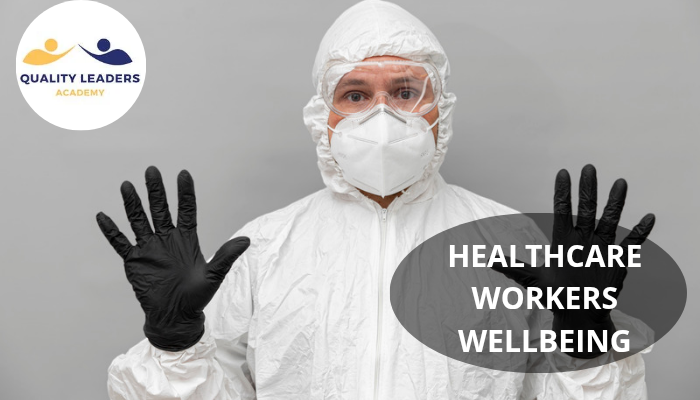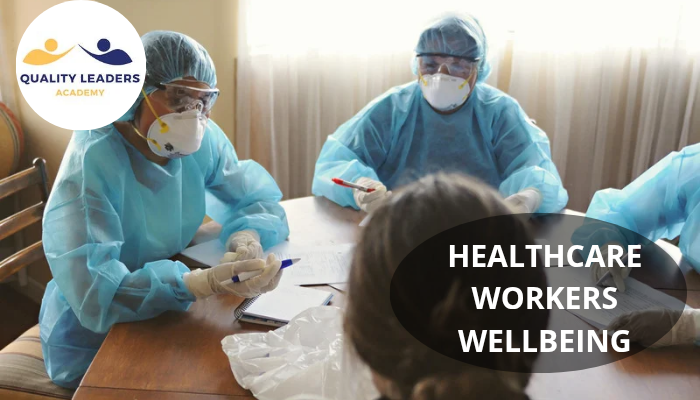In every hospital, clinic, and emergency ward, the strength of the healthcare system rests on the people within it. Healthcare worker wellbeing is not only about personal health; it is a crucial determinant of patient safety, quality outcomes, and institutional stability.
Yet, despite its importance, it remains one of the most vulnerable dimensions of modern healthcare.
According to the World Health Organization (WHO), nearly one in four healthcare facilities worldwide faces critical workforce shortages, often coupled with unsafe conditions that threaten both physical and mental health. Similarly, data from the Centers for Disease Control and Prevention (CDC) show that healthcare professionals are consistently among the occupations with the highest rates of work-related injury, burnout, and exposure to infectious diseases.
As risk management has evolved into a strategic function in healthcare, understanding and mitigating the threats to worker wellbeing has become central to both patient safety and organizational performance.
THE COMPLEX RISKS THREATENING HEALTHCARE WORKER WELLBEING

Healthcare workers face a spectrum of risks that extend beyond physical hazards. From biological exposure to emotional fatigue, these pressures combine to create a system vulnerable to burnout and human error.
Physical and Environmental Hazards
Healthcare settings are physically demanding. Long hours, shift rotations, and patient handling contribute to musculoskeletal injuries, while exposure to infectious agents increases the likelihood of illness.
The CDC’s National Institute for Occupational Safety and Health (NIOSH) emphasizes that repetitive strain, poor ergonomics, and prolonged standing are leading causes of chronic pain among nurses and technicians.
Psychological Strain and Burnout
Emotional exhaustion is one of the most pervasive threats to healthcare worker wellbeing.
Studies revealed that healthcare professionals working under prolonged stress, especially during public health crises like COVID-19, reported higher levels of anxiety, depression, and sleep disturbance.
Furthermore, recent studies point to the risk of Moral Injury, which is the psychological distress that occurs when staff are unable to provide the care they believe is best for the patient due to systemic obstacles, increasing feelings of helplessness and guilt.
The WHO notes that protecting healthcare workers’ mental health requires more than counseling services; it demands systemic change, including supportive leadership, fair workloads, and adequate rest. Without these conditions, burnout not only undermines workers’ health but also directly affects patient care.
Organizational and Cultural Challenges
The structure and culture of a healthcare organization play a decisive role in staff wellbeing. Poor communication, unclear expectations, and punitive management styles can erode morale and silence reporting of safety concerns. The CDC identifies “organizational readiness” as the capacity of leaders to recognize and act on risks to staff as a key factor in preventing occupational harm.
A culture of safety encourages open dialogue, continuous learning, and shared accountability. When such cultures thrive, both patient safety and staff resilience improve.
THE STRATEGIC IMPORTANCE OF MANAGING HEALTHCARE WORKER WELLBEING
Addressing risks to healthcare worker wellbeing is not merely a compliance issue; it is a strategic imperative tied to the success of the healthcare organization.
Risk managers and administrators must therefore expand their focus beyond operational and clinical safety to include the human element at the center of care delivery.
The Link Between Wellbeing and Patient Safety
Evidence consistently shows that the wellbeing of healthcare staff and the safety of patients are inseparable. According to the WHO’s 2020 initiative “Keep Health Workers Safe to Keep Patients Safe,” institutions that protect their workforce see fewer medical errors, improved recovery rates, and greater patient trust. For instance, studies indicate that an increase in nurse burnout is associated with a significant rise in issues like Medication Errors and adverse patient events.
Conversely, when workers are fatigued, unsupported, or exposed to unmanaged risks, patient outcomes deteriorate, and the risk of litigation and financial loss increases. Effective risk management, therefore, must balance patient safety protocols with proactive measures that support staff health.
Integrating Wellbeing into Risk Management Frameworks
Healthcare risk management frameworks increasingly emphasize the interconnection between human factors and organizational safety. Proactive models such as those taught in professional certification programs focus on early identification of staff-related risks, root-cause analysis of workplace incidents, and data-driven prevention strategies.
By incorporating wellbeing metrics into performance dashboards, leaders can track trends such as absenteeism, staff turnover, and incident reports to anticipate and address systemic issues before they escalate.
DEVELOPING THE SKILLS TO PROTECT HEALTHCARE WORKER WELLBEING
As healthcare risk management grows more complex, specialized knowledge is essential. Professionals responsible for ensuring safe, resilient healthcare environments must be equipped to assess and mitigate both operational and human risks, a skill set developed through advanced training such as the Certified Professional in Healthcare Risk Management (CPHRM) program.
WHY THE CPHRM COURSE AT QUALITY LEADERS ACADEMY MATTERS
The CPHRM course by Quality Leaders Academy is designed for healthcare managers, quality officers, and administrators who want to lead with confidence in environments where safety and wellbeing intersect. Unlike general management programs, it provides a comprehensive, risk-based approach to healthcare operations, equipping professionals to handle the full spectrum of clinical, financial, and workforce risks.
Participants gain hands-on expertise in identifying risk exposure, applying Root-Cause Analysis (RCA) to incidents impacting both patients and staff, and gaining the ability to design and lead a multidisciplinary committee for staff safety, developing mitigation plans, all while fostering safety cultures that prioritize both patient and staff wellbeing. The program’s evidence-driven curriculum aligns with international standards and WHO principles, ensuring that learners acquire skills applicable across diverse healthcare systems.
Key features include:
- A structured learning pathway focused on practical application rather than theory alone.
- Guidance from industry-certified instructors with real-world experience in healthcare risk management.
- Case-based learning that mirrors the complexity of modern healthcare challenges.
- Flexible online modules allow professionals to advance their education without interrupting their careers.
Through this course, healthcare leaders not only prepare for the global CPHRM certification exam but also gain the insight needed to create safer, healthier workplaces where wellbeing is treated as a measurable performance goal.
BUILDING A CULTURE THAT SUSTAINS HEALTHCARE WORKER WELLBEING

True transformation in healthcare risk management begins with culture. Leaders must champion policies that balance accountability with empathy and promote continuous improvement across all levels of the organization. This includes:
- Prioritizing transparent communication channels for incident reporting.
- Strengthening the role of Front-Line Managers in actively supporting their teams.
- Implementing flexible and fair scheduling policies for shifts/rotations.
- Allocating specific 'Non-Clinical Time' for staff to manage administrative tasks, attend training, and rest.
- Embedding wellbeing assessment into quality improvement plans.
- Ensuring that safety committees include representatives from multiple disciplines, including nursing, administration, and infection control.
Such approaches ensure that protection of healthcare workers is not an afterthought but an integrated part of institutional excellence.
A SAFER SYSTEM BEGINS WITH HEALTHCARE WORKER WELLBEING
The pursuit of safer healthcare begins with protecting those who provide it. Ensuring healthcare worker wellbeing is a fundamental aspect of risk management, directly tied to patient safety, regulatory compliance, and organizational sustainability.
Global authorities like the WHO, CDC, and leading research institutions agree: when healthcare professionals are safe, supported, and valued, the entire system thrives.
Training programs like the CPHRM course from Quality Leaders Academy empower current and future leaders to apply structured, evidence-based strategies that identify, manage, and prevent the risks that threaten healthcare workers every day. In doing so, they help shape a resilient future where care providers and patients alike can thrive in safety.
Resources:
https://www.cdc.gov/niosh/healthcare/risk-factors/index.html
https://www.who.int/news/item/17-09-2020-keep-health-workers-safe-to-keep-patients-safe-who
https://www.who.int/news/item/25-04-2024-202404_protecthw_mentalhealth


